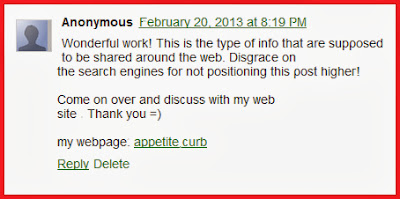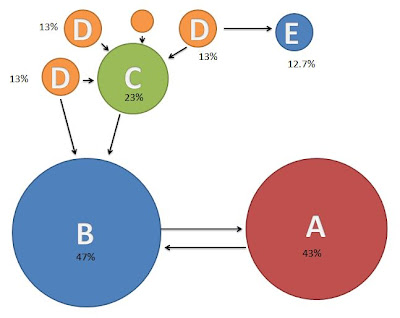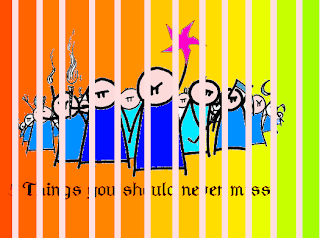 Comment moderation is one of those important aspects of managing a blog which tells the readers about the integrity and quality of the blog.
Comment moderation is one of those important aspects of managing a blog which tells the readers about the integrity and quality of the blog. A previous article on Tips for comment moderation talked about protecting a blog's image against comment spammers. This is the part two of the series.
The Link Factory Type
A very ancient breed of comment spammers often use a technique known as comment link flooding. In short, they flood the comment section with one or more links of a particular webpage, hoping that the sheer numbers would lead to an increase in the back links, thereby leading to higher page rank.As mentioned above, they are an ancient breed because, such methods have already been countered by search engine's algorithms and have little or no effect on both the websites.
Another reason why such comments often do not work on websites is because, the websites have already marked their comments section as no-follow (Which means that any links in the comment section would not affect your image at google or similar search engines). Hence any attempt at garnering back links by spamming comments is foiled.
The Hire Me Type
Some Comment spams are often disguised as marketing initiatives from unemployed designers/ developers and SEO professionals. Though it is not hard to decipher what they write, their text is often accompanied by options to hire the writer. Their comment reeks of "Hire Me!" all along. Needless to say, you should remove such comments.The Following comment was found on a previous article at codemakit talking about the dangers of trading an article with a service.

The Naked URL Type
You will often find that comments like the one below have little or no un-hyperlinked text. One often wonders if it is a ruse, with spammers trying to garner pageranks by adding links as mentioned in the first case.However, you must be careful. One look at the URL of the link would tell you if it is related to the article or not. If it is related and genuinely adds quality to the article, you can keep it. If not you should remove it as a crushed bug on a car's windshield.

True to Myself Type
Now you might see some comments which are genuinely concerned about the article and the blog.The first method of checking a comment against spam is to find is if the comment contains a hyperlink. The second method of finding if a comment isn't spam is to check the content for relevance to the article itself.Like the previous article on comment moderation, Here's an example of a genuine comment in which the author is concerned about the content of the article and phrases his/her comment accordingly.
The following article is on the geomatic changes in blog.

The Shakespearean Spammer
Not often you encounter wordy Shakespearean comment spammers. Only one thing differentiates such comment spammers from normal ones, The use of herculean amount of words, often relating to the article as a bee relates to a space ship and nearly every character of the comment has been copied form somewhere.The following comment was received at codemakit's article about including a favicon to your website.
Guess what? The spammer has commented about international concept of work from home! Who the F comments about work from home at a favicon based article? The comment was so large, that complete screenshot would have increased the length of the post by 30% and would have left you dazed.
Looking London Talking Tokyo Part 2
Some comment spammers do not use hyperlinks in their comments to avoid being filtered by automatic comment spam filters. The following comment is about Business phone lines at the Jetbro Interview article.In such cases, it is often advisable to skim through the comment to ensure that the comment is in accordance with the article itself.

Though this type of comment spam has been discussed before, I could not stop myself from entering the following comment from entering the wall of fame.

The Brazen Comment Spam
Now there exist a rare breed of brazen super-strong, fearless comment spammers who defies every law of commenting on article.First, Comments are often advised against adding links in their comments.
Secondly, Comments should be related.
Thirdly, the transition of ideas in the comments should be smooth and not abrupt.
Fourthly, You should not comment spam on an article on "Tips for comment moderation"!

Related Reading,
Liked it? You will obviously like the Part I of article on tips for comment moderation.
If you're not aware, here is the method of removing spam comments from the blog.Have you read some of our funniest comment spams here's Part I and here's part II?
Check out a case study about how a single sentence reduced comment spams by half.
This was about,













.bmp)
















.png)


















.png)

.png)